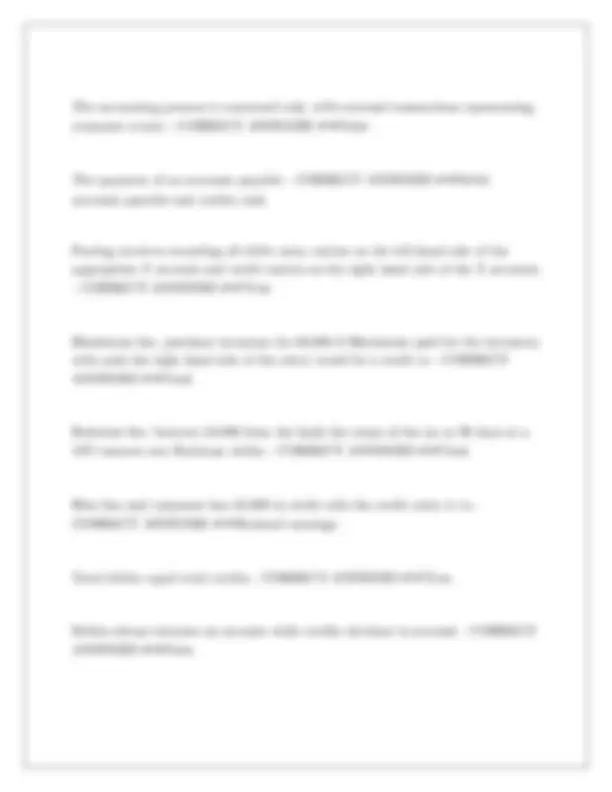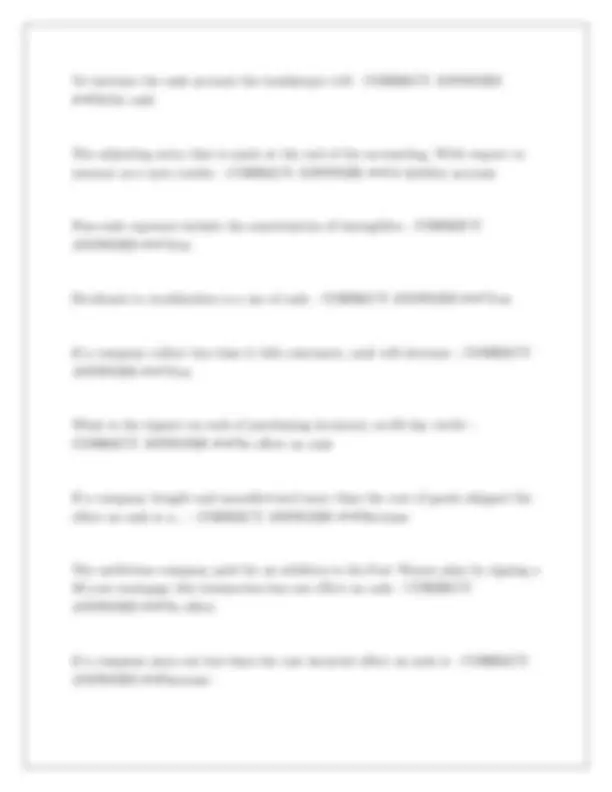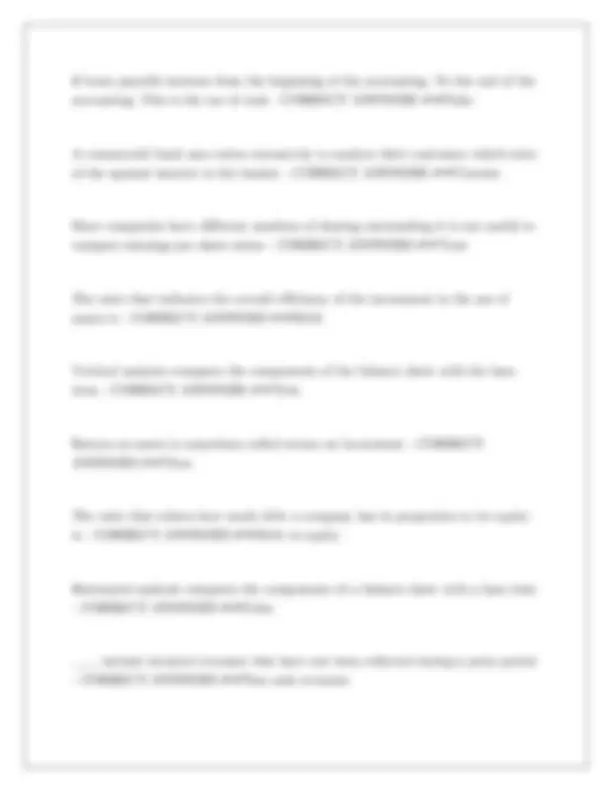





Study with the several resources on Docsity

Earn points by helping other students or get them with a premium plan


Prepare for your exams
Study with the several resources on Docsity

Earn points to download
Earn points by helping other students or get them with a premium plan
Community
Ask the community for help and clear up your study doubts
Discover the best universities in your country according to Docsity users
Free resources
Download our free guides on studying techniques, anxiety management strategies, and thesis advice from Docsity tutors
A set of multiple-choice questions and answers covering various aspects of accounting principles and practices. It covers topics such as financial accounting, managerial accounting, accounting standards, and financial statement analysis. The questions are designed to test understanding of key concepts and their application in real-world scenarios.
Typology: Exams
1 / 6

This page cannot be seen from the preview
Don't miss anything!




Academic accountants are members of which of the following association? - CORRECT ANSWERS ✔✔AAA Elson Inc. estimated the useful life of a patent and amortized it over its useful life. the GAAP is known as - CORRECT ANSWERS ✔✔Matching Preparing a production plan would be an example of - CORRECT ANSWERS ✔✔Managerial Accounting Owners in corporations are liable only for the amount they have invested and no more. TorF - CORRECT ANSWERS ✔✔TRUE The quality that assumes that information is reasonably free from error - CORRECT ANSWERS ✔✔Faithful representation A nonprofit organization such as a school does not prepare reports for external users - CORRECT ANSWERS ✔✔FALSE Presenting an asset in the balance sheet as its historical cost less accumulated depreciation is an example of - CORRECT ANSWERS ✔✔Financial Accounting Stapling Inc. projects sales revenues will exceed 100 million next year. this is an example of - CORRECT ANSWERS ✔✔Managerial Accounting
In periods of rising prices which of the following generally excepted accounting principles is violated - CORRECT ANSWERS ✔✔Monetary concept Current assets are properly listed in order of liquidy on a balance sheet as shown in the following example cash, accounts receivable, pre-paid insurance, inventory.
To increase the cash account the bookkeeper will - CORRECT ANSWERS ✔✔Debit cash The adjusting entry that is made at the end of the accounting. With respect to interest on a note credits - CORRECT ANSWERS ✔✔A liability account Non-cash expenses include the amortization of intangibles - CORRECT ANSWERS ✔✔True Dividends to stockholders is a use of cash - CORRECT ANSWERS ✔✔True If a company collect less than it bills customers, cash will decrease - CORRECT ANSWERS ✔✔True What is the impact on cash of purchasing inventory on 60 day credit - CORRECT ANSWERS ✔✔No effect on cash If a company bought and manufactured more than the cost of goods shipped the effect on cash is a... - CORRECT ANSWERS ✔✔Decrease The ambitious company paid for an addition to his Fort Wayne plan by signing a 30 year mortgage this transaction has one effect on cash - CORRECT ANSWERS ✔✔No effect If a company pays out less than the cost incurred effect on cash is - CORRECT ANSWERS ✔✔Increase
If taxes payable increase from the beginning of the accounting. To the end of the accounting. This is the use of cash - CORRECT ANSWERS ✔✔False A commercial bank uses ratios extensively to analyze their customers which ratio of the upmost interest to the banker - CORRECT ANSWERS ✔✔Current Since companies have different numbers of sharing outstanding it is not useful to compare earnings per share ratios - CORRECT ANSWERS ✔✔True The ratio that indicates the overall efficiency of the investment in the use of assets is - CORRECT ANSWERS ✔✔ROA Vertical analysis compares the components of the balance sheet with the base item - CORRECT ANSWERS ✔✔True Return on assets is sometimes called return on investment - CORRECT ANSWERS ✔✔True The ratio that relates how much debt a company has in proportion to its equity is - CORRECT ANSWERS ✔✔Debt to equity Horizontal analysis compares the components of a balance sheet with a base item